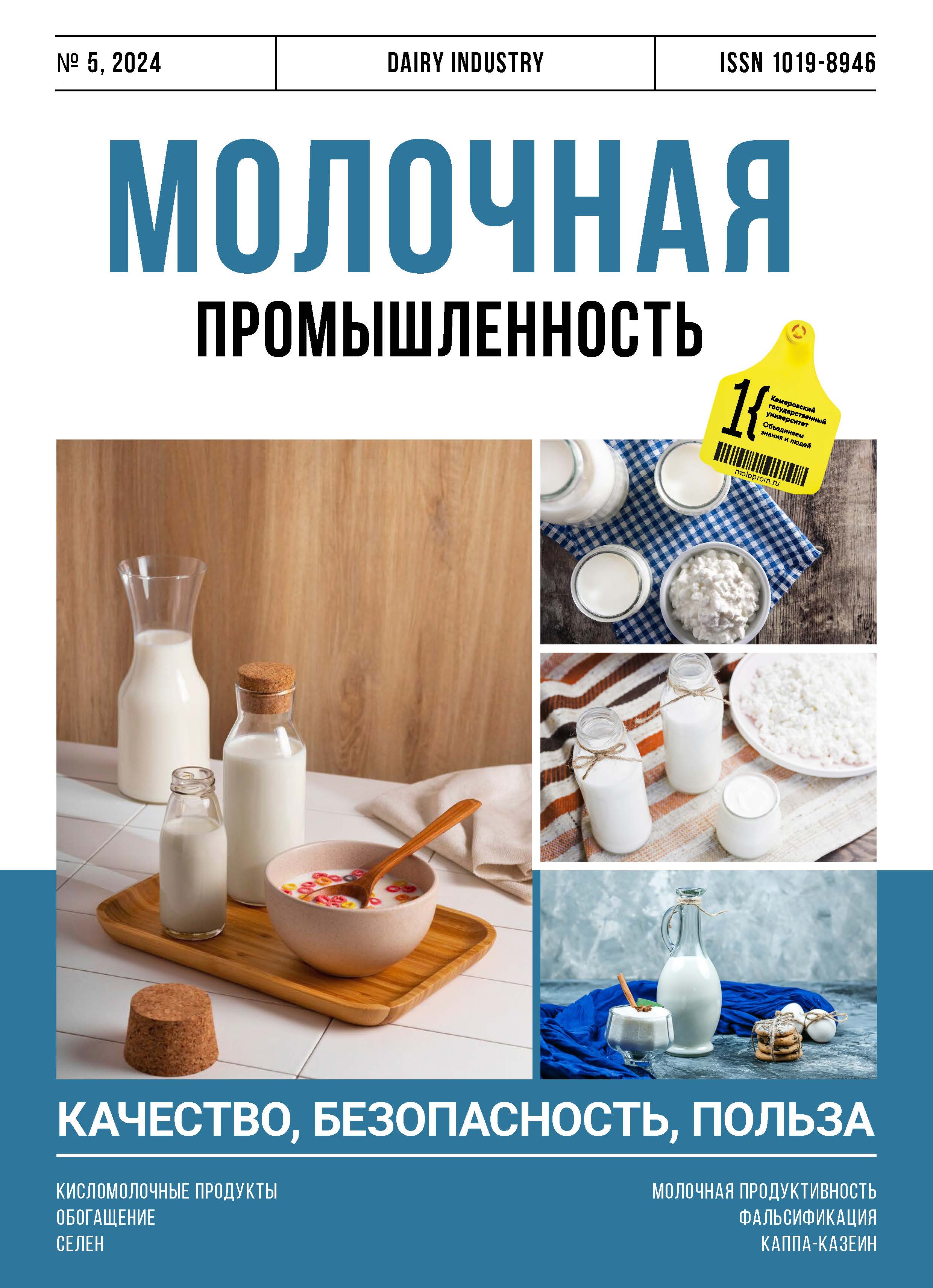Uglich, Russian Federation
Uglich, Russian Federation
Uglich, Russian Federation
Sensory properties of cheese define consumer choice. Their taste and smell depend on many production and maturation factors. These processes result in a dairy hydrolysis complex. If the technology of production and maturation are violated, the final component composition acquires undesired taste, consistency, and appearance. The taste of cheese depends on a number of factors, one of which is the type of starter microflora. This study assessed the effect of monospecific cultures of acid-forming types (Lactococcus lactis subsp. lactis, Lactococcus cremoris, and Streptococcus thermophilus) on the sensory profile of cheese with low-temperature second thermal treatment. The experiment featured semi-hard Gollandsky cheese with a fat mass fraction of 45 % solids. The experimental cheese underwent sensory evaluation for appearance, taste, smell, consistency, and pattern. The monospecific cultures failed to render the cheese its specific pungency, slight sourness, elasticity, slight brittleness, and a pattern of round or oval eyes. However, each acid-forming starter had a different effect on the sensory properties and defect risks.
cheese, sensory profile, appearance, taste, aroma, consistency, consumer preferences, acid-forming microorganisms, Lactococcus lactis subsp. lactis, Lactococcus cremoris, Streptococcus thermophilus
1. Gudkov, A. V. Syrodelie: tehnologicheskie, biologicheskie i fiziko-himicheskie aspekty / Pod red. S. A. Gudkova. – M.: DeLi print. – 2003. – 800 s.
2. Montel, M. S. Traditional cheeses: rich and diverse microbiota with associated benefits / M. C. Montel [et al.] // International Journal of Food Microbiology. 2014. Vol. 177. P. 136–154. https://doi.org/10.1016/j.ijfoodmicro.2014.02.019
3. Anastasiou, R. Omics approaches to assess flavor development in cheese / R. Anastasiou [et al.] // Foods. 2022. Vol. 11. № 2. P. 188. https://doi.org/10.3390/foods11020188
4. Nam, J. H. Changes in microbiota during cheese production: impact on production and quality / J. H. Nam [et al.] // Applied microbiology and biotechnology. 2021. Vol. 105. P. 2307–2318. https://doi.org/10.1007/s00253-021-11201-5
5. Tetereva, L. I. Organolepticheskaya ocenka produktov syrodeliya po novomu mezhgosudarstvennomu standartu / L. I. Tetereva, V. A. Mordvinova, N. N. Onosovskaya [i dr.] // Syrodelie i maslodelie. 2016. № 6. S. 36–38. https://elibrary.ru/xiibhr
6. Li, J. Investigation of the lactic acid bacteria in kazak cheese and their contributions to cheese fermentation / J. Li [et al.] // Frontiers in microbiology. 2020. Vol. 11. P. 228. https://doi.org/10.3389/fmicb.2020.00228
7. Afshari, R. New insights into cheddar cheese microbiota-metabolome relationships revealed by integrative analysis of multi-omics data / R. Afshari [et al.] // Scientific Reports. 2020. Vol. 10. №. 1. P. 3164. https://doi.org/10.1038/s41598-020-59617-9
8. Shingareva, T. I. Issledovanie haraktera protekaniya mikrobiologicheskih processov pri vyrabotke syrov tipa Rossiyskogo / T. I. Shingareva, V. M. Velinec, D. E. Zubec, E. O. Chuprunova // Aktual'nye voprosy pererabotki myasnogo i molochnogo syr'ya. 2021. №. 4. S. 149–154.
9. Wouters, J. T. M. Microbes from raw milk for fermented dairy products / J. T. M. Wouters [et al.] // International Dairy Journal. 2002. Vol. 12. Iss. 2–3. P. 91–109. https://doi.org/10.1016/S0958-6946(01)00151-0
10. Gore E. Exploratory study of acid-forming potential of commercial cheeses: impact of cheese type / E. Gore [et al] // International Journal of Food Sciences and Nutrition. 2016. Vol. 67. Iss. 4. S. 412–421. https://doi.org/10.3109/09637486.2016.1166188
11. Blaya, J. Symposium review: interactions of starter cultures and non-starter lactic acid bacteria in cheese environments. / J. Blaya, Z. Barzide, G. Lapointe // Journal of Dairy Science. 2018. Vol. 101. Iss. 4. P. 3611–3629. https://doi.org/10.3168/jds.2017-13345
12. Anastasiou, R. Omics approaches to assessing the development of taste in cheese / R. Anastasiou [et al.] // Food Products. 2022. Vol. 11. Iss. 2. P. 188. https://doi.org/10.3390/foods11020188
13. Sviridenko, G. M. Molochnye laktokokki, kak osnovnoy kislotoobrazuyuschiy komponent / G. M. Sviridenko, O. M. Shuhalova // Molochnaya promyshlennost'. 2019. № 4. S. 30–33. https://doi.org/10.31515/1019-8946-2019-4-30-33; https://elibrary.ru/zcaqkd
14. Sviridenko, G. M. Osobennosti podbora sostava bakterial'nyh zakvasok dlya proizvodstva syrov s nizkoy temperaturoy vtorogo nagrevaniya / G. M. Sviridenko, O. M. Shuhalova // Syrodelie i maslodelie. 2020. №. 4. S. 22–25. https://doi.org/10.31515/2073-4018-2020-4-22-25; https://elibrary.ru/mbkcrf
15. Fox, P. F. Fundamentals of Cheese Science / P. F. Fox [et al.]. – Boston: Springer, 2017. P. 271.






